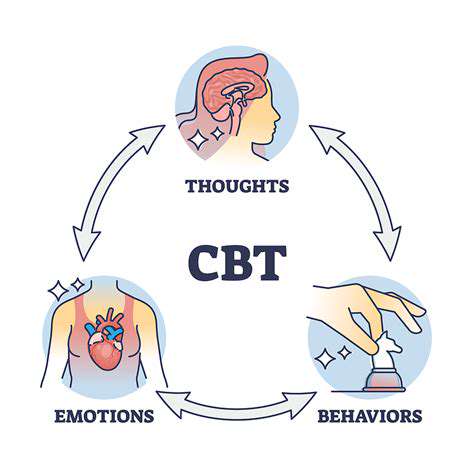
Understanding CBT's Core Principles
Many people find Cognitive Behavioral Therapy (CBT) to be an incredibly useful approach for addressing various psychological challenges. This method zeroes in on how our thoughts, emotions, and actions interact with one another. The foundational idea is that the way we think shapes how we feel and behave in everyday situations. Recognizing these connections allows individuals to spot and adjust unhelpful thought patterns that might be causing emotional difficulties. One of the most valuable aspects of CBT is how it highlights the impact of our experiences and learning on how we respond to life's challenges. The therapy provides concrete tools and methods for navigating tough circumstances while encouraging personal growth.
In practice, CBT follows a clear, step-by-step process where therapists and clients work together to pinpoint specific issues and craft personalized solutions. This teamwork builds a solid therapeutic relationship, giving people the confidence to actively participate in their own healing. The therapist serves as a supportive guide, assisting clients in making sense of their mental and emotional patterns to reach their desired outcomes. Rather than just discussing problems, CBT involves hands-on engagement with current experiences and practicing new techniques to enhance well-being.
CBT Techniques and Strategies
CBT incorporates multiple techniques tailored to address different concerns. For example, cognitive restructuring helps people recognize and question negative or exaggerated thoughts, swapping them for more balanced and constructive alternatives. This process requires looking at the facts supporting and opposing these thoughts while exploring different viewpoints. As clients progress, they gain better insight into their thinking habits and learn effective ways to handle difficult emotions. Another common approach is exposure therapy, where individuals gradually face feared situations to lessen anxiety and avoidance behaviors.
Behavioral activation is another essential CBT strategy focused on boosting involvement in enjoyable and meaningful activities, especially when motivation is lacking. Engaging in positive experiences can elevate mood and overall life satisfaction. This method helps disrupt cycles of withdrawal and low spirits by creating opportunities for achievement and personal agency. Additionally, relaxation practices like controlled breathing and progressive muscle relaxation prove invaluable for stress and anxiety management.
The Benefits and Applications of CBT
CBT delivers numerous advantages for people dealing with various difficulties, including anxiety disorders, depression, trauma recovery, and relationship struggles. Its organized framework offers clear guidance and measurable progress toward better mental health. Participants acquire practical skills they can continue using long after completing therapy, enabling them to handle future obstacles with greater independence. This approach particularly suits those seeking actionable methods to regulate their emotions and behaviors effectively.
Beyond treating specific conditions, CBT also enhances general well-being by increasing self-awareness, improving problem-solving abilities, and nurturing a healthier outlook. The therapy helps individuals gain profound understanding of their mental processes while encouraging proactive life management. By mastering control over their thoughts, feelings, and actions, people often experience more rewarding and meaningful lives.
CBT's adaptable nature makes it suitable for all age groups - children, teenagers, adults, and seniors alike. Its flexibility ensures relevance across diverse populations and situations, making it an exceptional resource for fostering mental wellness in various settings.
